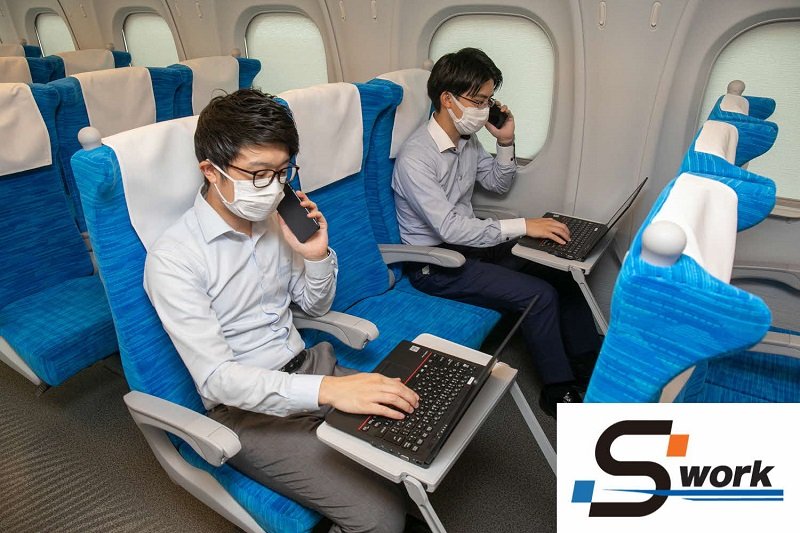
As movement of people is severely restricted due to the coronavirus pandemic, the tourism and transportation industries have suffered major damage and the challenges facing these industries continue even now. However, even under current circumstances, high-speed rail continues to operate as part of the nation's key infrastructure. In addition, operators are looking ahead to the future after the end of COVID. Today, I would like to introduce examples of several new measures adopted by operators in response to the pandemic.
1) Work-oriented initiatives targeted toward Shinkansen business travelers
As a result of the pandemic, work culture is changing and new work practices, such as telework, are spreading rapidly. In response to changing travel patterns and work practices, railway operators are focusing on improving the business environment at stations and in railcars.
For example, in October 2021, the Tokaido and Sanyo Shinkansen introduced "S work vehicles" in No. 7 cars of "Nozomi" trains. Because the clientele of these new vehicles is made up mainly of office workers, it is easy to concentrate on work while traveling in these cars. Moreover, in "N700S" series trains, which debuted last year, passengers have access to special Wi-Fi, which is free-of-charge and has about twice the capacity of conventional Wi-fi. Passengers can also borrow free-of-charge business support tools, such as knee-top cushions, chargers for PCs, etc. This will allow business customers to work while traveling on the Shinkansen even more comfortably than before. The fee for a reservation in the "S work vehicle" is expected to be the same as a "reserved seat" in a regular car. Please note that a seat in the "S work vehicle" can only be reserved through the "EX service" (JR Central's online reservation service).
In addition, business booths will be introduced in N700S series cars beginning next spring. In the future, using these new business booths, travelers will be able to hold meetings while onboard Shinkansen trains without worrying about their surroundings. Improvements are being developed and implemented not only on Shinkansen trains, but also within stations, and business corners and workspaces are scheduled to be installed at some stations by the end of this year.
Although travel time is often regarded as a cost, Japanese operators are working hard to create an environment in which travel time can be used comfortably and effectively.
2) Using Shinkansen to carry fresh freight in response to COVID-19
In response to the pandemic, JR firms have initiated new freight services via Shinkansen. Currently, the main products are high-value added goods where freshness is important, such as vegetables, fruits, and seafood. One of the Shinkansen’s great assets is the ability to transport these products at high speed and without delay.
For example, JR East began a project this spring to transport vegetables and fresh fish from Hakodate and Hokuriku to Tokyo and deliver these goods to supermarkets, restaurants, and other places outside the station. A permanent shop has also been established at Omiya Station. Customers in the Tokyo area can now enjoy fresh vegetables that were harvested that very same day. In the future, in addition to being used to deliver fresh foods, high speed transport by Shinkansen is expected to be used by businesses to deliver high-value industrial parts and also by individuals.